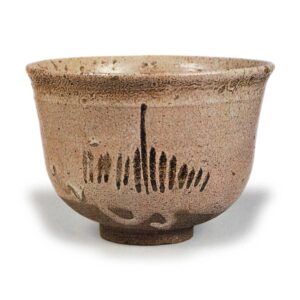
What is Karatsuyaki?
As far as we know, there are more than a hundred kilns in Higashimatsuura County, Imari City, Takeo City, Arita Town, and Sasebo City in Saga Prefecture that produced the so-called Karatsu ware. The oldest of these kilns are thought to be those scattered at the foot of Mt. Kishidake is a mountain 300 meters above sea level, where the Hata clan, a leader of the Matsuura party, once built a mountain castle and made it their residence. The fact that the kilns remain at the foot of the mountain clearly indicates that the kilns were under the control of the Hata clan, and the fact that they were all North Korean-style split bamboo climbing kilns tells us that they were started by potters who came from Korea.
It is not clear when the Kishidake kiln, which is considered the oldest in Karatsu, was started, as there are no reliable documents remaining, but Mizumachi Wasaburo, Nakazato Tarouemon, and others have suggested that it was started in the first half of the 15th century, based on historical background and comparison with Korean pottery. Indeed, based on the relationship between the Matsuura party and Korea, it can be said that there was a possibility of the arrival of Korean potters for an extremely long period of time in history. The fact that the lord of Kishidake Castle was Hata, a leader of the Matsuura party, indicates that it was possible at any time during the period from the 14th century, when the Matsuura party was very active as a Japanese pirate, through the period of the age-old trading between the 15th and 16th centuries, to have brought or invited potters from Korea and had them build kilns. However, there is no documented evidence of this in either the Joseon or Japanese side.
In the book “Dangjin” written by Nakazato Tarouemon, a fragment of pottery excavated from the Kishidake Iidong Pottery Kiln has an earthen ash glaze on the inside and a feldspar glaze on the outside in the style of celadon, which is similar to the fragments of celadon inside and white porcelain outside fired in the 15th century in Doma-ri, Gwangju County, Korea. However, it is difficult to say whether the Iidong jar sherds really date back to the first half of the 15th century or not. If the Iidong jar kilns and Hozutama kilns, the main kilns at Kishidake, were started in the first half of the 15th century, then the kilns would have been smoking for nearly 200 years until the end of the 16th century. However, even if the kilns were only active for a short period of time, the excavated pottery shards seem to show too little change to indicate that the kilns had been burning for nearly 200 years. Moreover, even if the kiln was simply a local miscellaneous kiln that met the needs of the Hata clan, there is not enough data to estimate a period as long as 200 years. For this reason, we must question the theory that the kiln was opened in the first half of the 15th century. We also assume that the opening of the kiln was probably around the time of the Tenmon period, when the use of Korai tea bowls became increasingly popular in Japan. However, since the styles of the Kishigaku kilns seem to have originated from North Korean ceramics, I would like to wait for further research on the date of their establishment in connection with the investigation of old kiln sites in North Korea.



